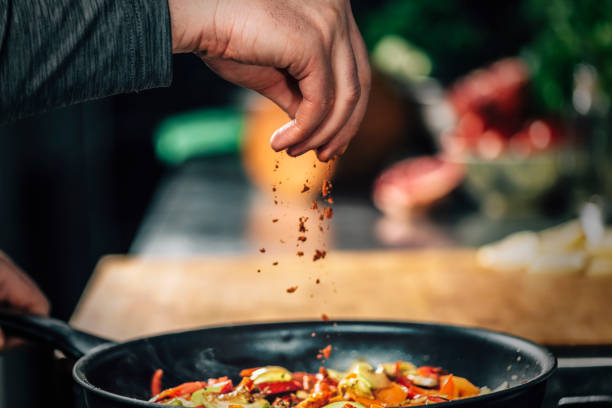Culinary Alchemy: Transforming Everyday Ingredients
From humble pantry staples to gourmet delights, the art of cooking is a form of everyday magic. But what if we could take this magic a step further? Welcome to the world of culinary alchemy, where ordinary ingredients undergo extraordinary transformations, challenging our perceptions and tantalizing our taste buds in unexpected ways.

One prime example is the transformation of aquafaba, the liquid from canned chickpeas, into a vegan egg white substitute. This once-discarded byproduct can be whipped into meringues, mousses, and even mayonnaise, mimicking the properties of egg whites with uncanny precision. The secret lies in its unique combination of proteins and starches, which create a stable foam when whipped.
Reimagining Vegetable Scraps
In the quest for sustainability and reducing food waste, innovative chefs are finding ingenious ways to use every part of the vegetable. Carrot tops become pesto, broccoli stems are transformed into rice, and watermelon rinds are pickled for a tangy condiment. This approach not only minimizes waste but also introduces new textures and flavors to our culinary repertoire.
One particularly exciting development is the use of vegetable peels to create crispy, flavorful chips. Potato skins, typically discarded, can be seasoned and baked into a crunchy snack that rivals traditional potato chips in taste and texture. Similarly, apple peels can be transformed into delicate, lacy crisps that add a touch of elegance to desserts or cheese platters.
The Art of Molecular Mixology
The principles of culinary alchemy extend beyond the kitchen and into the world of beverages. Molecular mixology, a subset of molecular gastronomy, applies scientific techniques to cocktail creation, resulting in drinks that challenge our perceptions of what a cocktail can be.
Techniques like spherification, where liquids are encapsulated in a thin gel membrane, allow mixologists to create “liquid olives” filled with vodka or burst-in-your-mouth cocktail pearls. Foams and airs, created using lecithin or other stabilizers, add new dimensions to drinks, allowing flavors to literally float above the glass. Even simple techniques like smoking or infusing can dramatically alter the flavor profile of a familiar spirit.
Texture Transformation: The Next Frontier
While flavor manipulation has long been a focus of culinary innovation, texture transformation is emerging as the next frontier in culinary alchemy. Chefs are exploring ways to alter the physical structure of foods, creating dishes that play with our expectations and challenge our sensory perceptions.
One fascinating example is the creation of “fake foods” that mimic the appearance of one ingredient while tasting entirely different. Molecular gastronomy techniques can be used to create caviar-like spheres that burst with fruit juice, or “eggs” made entirely from plant-based ingredients. These dishes not only surprise and delight diners but also open up new possibilities for those with dietary restrictions.
The Future of Food: Edible Technology
As technology continues to advance, the boundaries of culinary alchemy are expanding even further. 3D food printing, for instance, allows chefs to create intricate designs and structures that would be impossible to achieve by hand. This technology can be used to create custom-shaped pasta, elaborate sugar sculptures, or even personalized nutritional supplements.
Another exciting development is the use of sound waves to manipulate the texture and flavor of foods. Researchers have found that exposing chocolate to specific sound frequencies can alter its texture, potentially allowing for the creation of low-fat chocolate that retains the mouthfeel of full-fat versions. Similarly, ultrasound technology is being explored as a way to tenderize meat or extract flavors from herbs and spices more efficiently.
Useful Tips & Facts
• Aquafaba can replace egg whites in many recipes, using about 3 tablespoons per egg white.
• Vegetable scraps can be saved in the freezer until you have enough to make a flavorful stock.
• Molecular mixology kits are available for home use, allowing amateur mixologists to experiment with techniques like spherification.
• Sound waves at 50 Hz can enhance the perceived creaminess of chocolate.
• 3D food printers are becoming more affordable and accessible for home cooks.
As we continue to push the boundaries of what’s possible in the kitchen, culinary alchemy promises to revolutionize not just how we eat, but how we think about food. By challenging our preconceptions and embracing innovation, we open ourselves up to a world of new flavors, textures, and experiences. Whether you’re a professional chef or a curious home cook, there’s never been a more exciting time to explore the transformative power of food.





